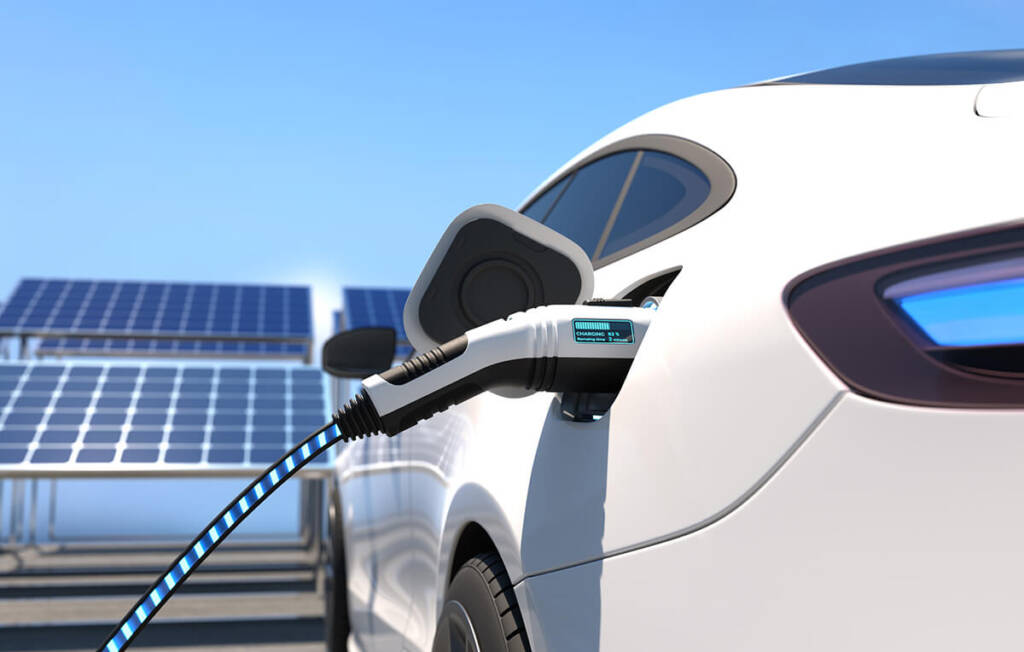Electric vehicles are taking the market by storm, prompting more and more fleet managers to ask this question: Do I explore electric options or stick with internal combustion engine (ICE) vehicles? In this guide we will compare the two in terms of cost, maintenance, and benefits so that you can optimize efficiency and make the best decision for your fleet.
Types of Electric Vehicles
- Battery Electric Vehicles (BEVs) run entirely on electric motors powered by a high-capacity battery. They must be plugged in to charge.
- Hybrid Electric Vehicles (HEVs) are powered with both an internal combustion engine (ICE) and an electric motor. Gasoline is the primary fuel source for the ICE engine, with the electric motor running off of a battery that’s significantly smaller than those found in BEV and PHEV vehicles.
- Plug-In Hybrid Electric Vehicles (PHEV) like HEVs, these vehicles have both an internal combustion engine and electric motor. These cars can be refueled with gasoline like an internal combustion engine vehicle, however their battery packs are larger than those found in a HEV and require being plugged into an outlet. These batteries are capable of powering a PHEV in EV-only mode for 25 to 40 miles, on average.
Cost of Purchasing or Leasing Gas Cars vs. Electric Vehicles

In general, purchasing or leasing EVs is more expensive up front, but you will save on fuel and maintenance in the long term. This can make EVs a more cost-effective choice depending on how and where your fleet operates..
When purchasing or leasing EVs, you also need to consider EV infrastructure costs. This includes charging equipment, operation, maintenance, and annual charging network fees.
Depending on your EV model and manufacturer, you might be eligible for tax credits or incentives that can help off-set the purchase/leasing price. Plus, if you are a fleet manager looking to help reduce your carbon footprint, implementing EVs is one of the fastest and most effective ways to help your company or organization meet its Environmental, Social, and Governance (ESG) goals.
Cost to Charge EVs vs. Fuel Gas Cars
There are three types of charging options — home, depot, and public. As a fleet manager, you may opt for one or a combination of all three. If you don’t want to rely purely on public charging options, you will need to consider an investment in your own specific charging equipment. This will be an additional upfront cost when first adopting EVs that will pay back over time. You also need to consider the on-going cost of electricity compared to gas prices, both of which can be volatile.
An excellent way to maintain control over fuel purchases and gain insight into detailed fuel data is with fuel cards. Data from your fuel spend along with a prediction of how much electricity you would use to charge your EV can help you decide whether EVs are worth the investment.
Maintenance Costs
Gas-powered vehicles require oil changes, fluid flushes, replacements of timing belts, and more that are unnecessary for BEVs. And since PHEVs and HEVs have internal combustion engines, they have greater maintenance requirements than traditional gas-powered vehicles. EVs do require basic maintenance of the standard items like tires and brake pads, as well as limited EV-specific items such as the liquid coolant system that prevents the battery from overheating. Brakes will typically last longer on EVs due to regenerative braking.
Selection — What’s On the Market
Though there are more gas-powered vehicles on the market, there are now hundreds of EVs available from top manufacturers such as Ford, Chevrolet, and GM (plus emerging manufacturers such as Xos) — with more coming.
When it comes to affordable electric cars for fleets, the top three compact cars are:
- 2023 Chevrolet Bolt EV
- 2023 MINI Cooper SE Electric Hardtop
- 2023 Nissan Leaf
The best electrified pickup trucks include:
- 2023 Ford F-150 Lightning
- Chevy Silverado EV (coming soon)
- 2023 Ford Maverick (HEV)
The best electric vans are:
- Ford e-Transit
- BrightDrop Zevo 600
- RAM ProMaster EV (coming soon)

Looking for more vehicles? Use our comprehensive EV database to research, sort, and filter your options.
Comparison Chart
Here’s a quick recap of how gas-powered and electric vehicles stack up.
| Gas-Powered Vehicles | Electric Vehicles | |
| Purchasing | Less expensive up front and does not require extra equipment | More expensive up front, but as model selection improves, prices have started to come down |
| Leasing | Less expensive, often includes some maintenance and repair coverage | Lease price will reflect higher upfront cost. Also must consider investment in charging equipment.,and annual charging network fees. Tax credits might be available |
| Charging & Fuel | Dependent on gas prices | Dependent on electricity prices |
| Maintenance | Require oil changes, fluid flushes, air filters, belts and hoses, transmission maintenance, and more. Most OEMs offer 5 years/60k miles warranty on powertrain components. | Electrical systems typically require less maintenance, brakes last longer. 8 year/100k warranty coverage on EV batteries |
| Selection & Availability | More variety and readily available | Growing in popularity with most automakers committing to electrified models in the future. |
Ready to Get Started On Your EV Adoption Journey?
We have many years of knowledge and experience with both EVs and ICE vehicles and are continually supporting those that are considering or in the process of EV fleet adoption. As an end-to-end EV provider, we help fleet managers with all aspects of EV adoption process and provide a variety of support programs, including fleet telematics, maintenance, consulting, leasing, charging solutions and more.
If you have any questions, our EV consultants are ready to help. Contact us today for more information.

